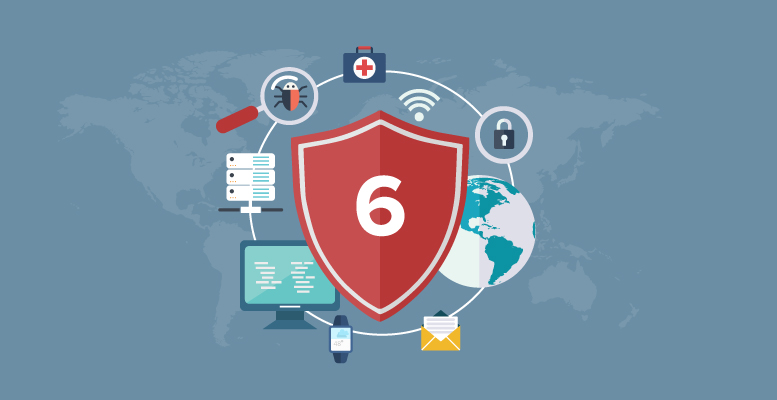
As the world goes digital, security threats and cybercrimes evolve more rapidly. Take a look at these cybersecurity trends to keep it safe in 2018.
Over the years, cybercrime has grown at such an alarming rate that CIOs and business owners are constantly concerned about data security and unpleasant breaches in their organizations.
2017 saw some shocking leaks and some of the biggest data breaches of the decade including giants like Verizon and Equifax being affected. This rising tide of cybercrime has put an increased pressure on businesses to rethink about their cybersecurity systems.
So, what’s going to unfold in 2018? We’ve compiled a list of the top 6 cybersecurity trends to watch out for this year.
Preparing for GDPR compliance
The European Union’s General Data Protection Regulation (GDPR) is all set to affect thousands of enterprises worldwide from May, 2018. The GDPR is EU’s massive move towards securing European citizens’ sensitive data, regardless of physical location barriers. The law is applicable to all enterprises which use information related to EU citizens. Therefore, companies all over are preparing for the biggest data privacy regulation of the decade with vigor.
Internet of Things (IoT) and the risks involved
The IoT culture is on a massive high. Gradually, it has started to creep up in all aspects of our existence and it’s not late until the world will be obsessed with IoT devices. However, as much as we love the concept of IoT, it brings with it some cybersecurity challenges that cannot be overlooked. And with time, enterprises are taking measures to secure data within IoT devices and minimize enterprise risk.
Security with Artificial Intelligence (AI) and Machine Learning
Stringent regulations and increased risks of data breaches are making it essential to monitor IT activities and keep a track of data security. Mere dependence on security staff and traditional software is not enough. Companies are waking up to the need of the hour and adopting AI and Machine Learning to be able to detect malicious activities immediately and take safety measures effectively.
Preventing Ransomware Attacks
Ransomware attacks have been causing distress in digital enterprises for a long time now. In 2016, 18 million new types of malware were identified, and the numbers have been increasing ever since. The ripples of malware like SimpleLocker and WannaCry have startled companies globally and forced them to be more proactive in identifying and fighting ransomware attacks.
A rise in insider breaches
Digital enterprises are always faced with the threat of insider breaches. An insider breach occurs when a company’s sensitive data is exposed to malicious software due to phishing, theft or even carelessness of its employees. Studies reveal that 74% companies find themselves vulnerable to insider breaches. Organizations across industries like healthcare and finance report that almost 60% of their cyber attacks are carried out by insiders. And companies will continue to face insider threats in 2018 if they fail to address suspicious behavior well in time.
Use of Analytics in Cybersecurity
Companies have started using advanced analytics to help them deal with cybersecurity threats. They’re approaching methods like micro trend analysis, malware research and analysis and malware performance detections to identify any sources of threats and fight back immediately. And in 2018, more companies are expected to adopt analytics for better cybersecurity.
The estimated costs of cybercrime by 2021 are about $6 trillion and records show that 99% computers are vulnerable to security attacks. And with digitization, there comes a growing need to prevent data breaches strongly and combat cybercrime effectively. Strict vigilance and the ability to act fast in case of breaches is what will keep you safe from security incidents and heavy penalties in the long run.